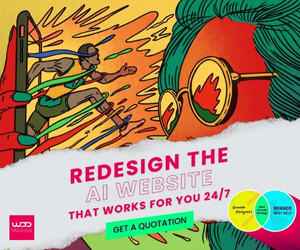
Introduction to Responsive Web Design
In today’s digital age, the way people access the internet has undergone a significant shift. With the proliferation of smartphones, tablets, and other mobile devices, it has become imperative for websites to adapt to various screen sizes and resolutions. This is where Responsive Web Design comes into play.
What is Responsive Web Design?
Responsive Web Design refers to an approach that aims to create web pages that can adapt seamlessly to different screen sizes and devices. It involves creating layouts by utilising a combination of flexible grids and layouts, images, and CSS media queries. By doing so, websites can ensure an optimal viewing experience for users across a full browser width and wide range of devices.
As of March 2024, mobile devices contribute to a staggering 61.21% of all website traffic globally. Furthermore, around 96.5% of global users access the internet via mobile phones, with over 94.6% doing so via smartphones. These statistics underscore the critical importance of designing websites that are responsive and adaptable.
Why Does it Matter?
The growing prevalence of mobile internet usage highlights the necessity for websites to be designed with responsiveness in mind. With approximately 95.2% of internet users in Asia accessing the web via mobile phones, it is evident that catering to mobile users is no longer optional but rather a fundamental requirement for web design.
By understanding responsive design principles and adopting a mobile-first approach, designers can ensure that their websites render well on a variety of screen sizes and resolutions. This not only enhances user experience on desktop version of the website but also addresses the challenges posed by multi-device access to web content.
Understanding Mobile Usage Statistics

The digital landscape has experienced a monumental shift in internet usage patterns, with a significant rise in mobile usage statistics. The data paints a clear picture of the increasing dominance of mobile devices as the preferred medium for accessing the internet.
The Rise of Mobile Internet Use
The percentage of people accessing the internet via mobile devices has seen a remarkable surge, surpassing traffic from desktop computers for the first time in Q1 2017. This trend has only accelerated over the years, with mobile traffic witnessing an impressive growth of 75% from 2015 to 2024. As of now, mobile devices contribute to a staggering 92.3% of all website traffic globally, highlighting the undeniable impact and preference for mobile internet use.
Key Statistics That Highlight the Trend
92.3%: Percentage of website traffic contributed by mobile devices globally.
75%: Growth in mobile traffic from 2015 to 2024.
This exponential growth underscores the critical importance of optimising websites for various screen sizes and resolutions to cater to the ever-increasing number of users accessing content through their smartphones and tablets.
What This Means for Web Design
The overwhelming dominance of mobile device usage in worldwide internet traffic cannot be overlooked. With an astonishing 59% of all internet usage stemming from mobile devices, it is evident that web design must evolve to prioritise responsiveness across different platforms and screen sizes.
Moreover, with over 4.32 billion global mobile internet users in 2021 and an even larger share in mobile-first markets such as Asia and Africa, it is imperative for web designers to adapt their strategies to meet this growing demand.
The Battle: Mobile vs Responsive Design

As we delve into the realm of mobile web design, it’s crucial to understand the fundamental differences between Mobile Design and Responsive Design. Each approach to flexible design offers unique advantages and considerations that can significantly impact the user experience across various devices.
Defining Mobile Design
Mobile Design primarily focuses on creating a separate version of a website or application specifically tailored to mobile devices. This often involves developing a distinct mobile site with its own layout, content, and functionality. While this approach can provide a customised experience for mobile users, it requires additional resources and maintenance to manage multiple versions of the same content.
On the other hand, Responsive Design takes a more holistic approach by ensuring that web designs seamlessly adapt to different screen sizes and resolutions without the need for separate mobile-specific versions. By leveraging flexible grids, layouts, and CSS media queries, responsive design allows websites to natively and automatically adjust to fit varying screens and interactivity limitations. As far as the user is the web designer is concerned, the experience remains consistent across all devices.
How Responsive Design Adapts
One of the key distinguishing features of Responsive Design is its ability to dynamically adjust content based on the user’s device. Resizing the browser window affects the layout and placement of design elements, demonstrating the dynamic nature of responsive design across different devices. Whether accessed from a browser window on a desktop computer, tablet, or smartphone, responsive websites maintain their visual integrity while optimising navigation and interaction for each specific device. This adaptability ensures that users receive an optimal viewing experience regardless of their chosen platform.
When comparing Responsive Design vs Mobile Design, it becomes evident that responsive design prioritises accessibility across all devices while streamlining development efforts. By eliminating the need for separate mobile-specific sites, responsive design not only saves time and resources but also ensures a consistent user experience throughout.
Furthermore, responsive design will continue to evolve in response to new devices, user expectations, and technological advancements. It focuses on creating responsive experiences that consider user context and behaviour, tailoring content based on factors such as location, time of day, and user preferences.
In contrast, mobile-first design, while always responsive in nature, places particular emphasis on enhancing mobile UX and prioritising the mobile experience from the outset. This proactive approach ensures that websites are optimised for seamless interaction across various devices while maintaining a strong focus on mobile usability.
How Responsive Web Design Works
Responsive web design is a multifaceted approach that involves a combination of technologies and techniques to create websites that adapt to different devices and screen sizes. At its core, responsive web design relies on three key mechanisms: fluid grids, flexible images, and multiple media queries together.
Core Mechanisms and Technologies
Fluid Grids: Imagine your website layout as a flexible, stretchable grid. Instead of using fixed units like pixels, fluid grids use relative units such as percentages. This allows the layout to expand or contract based on the screen size, ensuring that your web page looks great whether it’s viewed on a large desktop monitor or a small mobile phone.
Flexible Images: Just like fluid grids, flexible images are designed to scale up or down depending on the screen size. By using relative units to define the width and height of images, they can adjust seamlessly to fit different devices. This ensures that images are always displayed correctly, without distortion or loss of quality.
Media Queries: Media queries are a powerful CSS technique that allows developers to apply different styles based on the characteristics of the user’s device, such as screen size and resolution. For example, a media query can be used to change the layout of a web page when it’s viewed on a mobile device versus a desktop computer. This ensures that the website is always optimized for the best possible user experience.
Fluid Grids, Flexible Images, and Media Queries
These three core mechanisms work together to create a responsive website. Here’s how:
Fluid Grids: The fluid grid system defines the overall layout of the website. By using relative units, the layout can adapt to different screen sizes, ensuring that all elements are proportionally sized and positioned.
Flexible Images: Flexible images ensure that visual content scales appropriately. Whether an image is viewed on a large desktop screen or a small mobile device, it will adjust its size to fit the available space without losing its aspect ratio or quality.
Media Queries: Media queries allow developers to fine-tune the appearance of the website based on the device’s characteristics. For instance, a media query might be used to switch from a multi-column layout on a desktop to a single-column layout on a mobile device, enhancing readability and navigation.
By combining fluid layouts, grids, flexible images, and media queries, developers can create websites that adapt to different devices and screen sizes, providing a better user experience for mobile users. This holistic approach ensures that your website remains functional, visually appealing, and user-friendly, no matter how it’s accessed.
5 Undeniable Benefits of Responsive Design

As we delve into the realm of responsive design benefits, it becomes evident that this approach offers a myriad of advantages that significantly impact the user experience and overall success of a website.
Improved User Experience
One of the undeniable reasons why responsive design is the future lies in its ability to deliver an enhanced user experience. By seamlessly adapting responsive site to various screen sizes and resolutions, responsive websites ensure that users receive a coherent and consistent experience across devices. This fosters trust and reliability, ultimately contributing to higher engagement and satisfaction among visitors.
Better SEO Rankings
Implementing responsive design can also lead to better search engine optimization (SEO) rankings, particularly in light of Google’s Mobile-First Indexing. With search engines prioritising mobile-friendly websites in their rankings, embracing responsive design becomes imperative for maintaining a strong online presence. This comprehensive approach not only ensures accessibility on all devices but also aligns with search engine algorithms, thereby enhancing visibility and discoverability.
Google's Mobile-First Indexing
Google’s Mobile-First Indexing signifies a fundamental shift in how the search engine indexes and ranks websites. With this approach, Google predominantly uses the mobile version of a site for indexing and ranking, emphasising the importance of responsive and mobile friendly design, for optimal visibility in search results.
Lower Maintenance Needs
Another compelling reason to embrace responsive design is its potential to minimise maintenance needs. Unlike traditional approaches that require managing separate desktop and mobile versions, responsive design streamlines content management by consolidating all updates into a single platform. This not only saves time and resources but also ensures content parity across devices, eliminating the need for users to zoom, pan, or scroll on mobile devices.
Faster Web Page Load Times
When it comes to online browsing, faster webpage load times are crucial for retaining user engagement and satisfaction. A responsive web design plays a pivotal role in optimising load times across various devices, ensuring that users can access content swiftly and seamlessly.
Research has shown that 47% of consumers expect a web page to load in 2 seconds or less, emphasising the significance of swift loading times in retaining visitors. By implementing responsive design principles, websites can streamline their code and content delivery, resulting in faster loading speeds. This not only enhances user experience but also aligns with search engine algorithms that prioritise fast-loading websites.
Moreover, the adoption of responsive images and media queries allows websites to deliver appropriately sized assets based on the user’s device, further contributing to accelerated load times. This adaptive approach ensures that users receive optimised content tailored to their specific screen size and resolution, minimising unnecessary data transfer and improving overall performance.
In addition to enhancing user experience, faster webpage load times have been linked to higher conversion rates. Studies have indicated that a one-second delay in page load time can lead to a 7% reduction in conversions, underscoring the direct impact of speed on driving desired actions from visitors. By prioritising responsiveness and load time optimization, websites can effectively increase their conversion rates by providing a seamless and efficient browsing experience for users.
Common Challenges and Solutions in Responsive Design
Responsive design can be challenging, especially when dealing with complex layouts and different devices. Here are some common challenges and solutions:
Overcoming Design Limitations
Designing for Multiple Screen Sizes: One of the biggest challenges in responsive design is creating a layout that works well on a wide range of screen sizes. To overcome this, developers can use fluid grids and flexible images. Fluid grids allow the layout to adjust proportionally, while flexible images ensure that visual content scales appropriately. This combination helps maintain a consistent look and feel across different devices.
Dealing with Different Devices: Different devices come with varying screen sizes, resolutions, and capabilities, making it difficult to ensure a consistent user experience. Media queries are a powerful tool to address this challenge. By applying different styles based on the device’s characteristics, developers can tailor the website’s appearance and functionality to suit each device. For example, a media query can be used to hide certain elements on smaller screens or to adjust font sizes for better readability.
Ensuring Consistency: Maintaining a consistent design and user experience across different devices can be tricky. To achieve this, developers should use a consistent design language throughout the website. This includes using the same color schemes, typography, and design elements. Additionally, media queries can be employed to apply specific styles that ensure consistency across various screen sizes and resolutions.
By understanding the core mechanisms and technologies of responsive web design, and by overcoming common design limitations, developers can create websites that provide a better user experience for mobile users and adapt to different devices and screen sizes. This approach not only enhances usability but also ensures that your website remains relevant and effective in an increasingly mobile-first world.
Why Responsive Websites is the Future

The Growing Importance of Mobile Accessibility
As we navigate through the ever-evolving digital landscape, the significance of responsive web design becomes increasingly apparent, particularly in the context of mobile accessibility. With a substantial portion of internet users gravitating towards mobile devices for their online activities, it is imperative for websites to prioritise mobile responsiveness to cater to this growing user base.
The proliferation of smartphones and tablets has revolutionised the way individuals consume online content. In fact, statistics reveal that approximately 73% of internet users encountered websites that were too slow to load within a 12-month period. This underscores the critical need for websites to embrace responsive design principles that optimise loading times across various devices.
Moreover, user preference for faster loading times is underscored by compelling statistics. For instance, if a site loads in one second, it has an average conversion rate of 39%, highlighting the direct correlation between loading speed and user engagement. Additionally, ecommerce sites that loaded in one second boasted conversion rates of 3.05%, further emphasising the pivotal role of responsive design in driving favourable outcomes for online businesses.
Adapting to Screen Diversity
In an era characterised by screen diversity, where users access content across an array of devices with varying screen sizes and resolutions, responsive web design emerges as a fundamental solution. With 82% of consumers expressing that slow page speeds impact their purchasing decisions and every second improvement in loading speed leading to a 17% increase in conversion rates, it is evident that adapting to screen diversity through responsive design holds immense potential for enhancing user experience and driving desired actions from visitors.
Furthermore, research indicates that for every five-second delay in loading speed, the probability of bounce increases by 90% compared to a page that loads in one second. This emphasises the critical role played by responsive design in mitigating bounce rates and fostering sustained user engagement across diverse screens.
As we look ahead into the future of web design, it becomes increasingly clear that embracing responsive web design is not just about meeting current demands but also about future-proofing websites against evolving user behaviours and technological advancements.
By prioritising mobile accessibility and adapting to screen diversity through responsive design strategies, websites can position themselves at the forefront of digital innovation while delivering seamless experiences across all devices.
How Responsive Design Enhances User Experience

Seamless Interaction Across Devices
One of the most compelling aspects of responsive design is its ability to facilitate seamless interaction across a diverse array of devices. This adaptability, through the use of flexible layouts, ensures that users can access and navigate websites effortlessly, regardless of the browser size or device they are using. Whether it’s a desktop computer, tablet, or smartphone, responsive design guarantees a consistent and intuitive browsing experience.
The significance of this capability is underscored by statistical data that reveals the substantial growth in mobile traffic from 2015 to 2024. In 2024, over 60.67% of the internet traffic came from mobile devices, signifying the increasing reliance on smartphones and tablets for accessing online content. This trend emphasises the critical need for websites to prioritise responsive design in order to accommodate the evolving preferences and behaviours of users.
By leveraging flexible grids and layouts, responsive websites seamlessly adjust their visual presentation and interactive elements to suit varying screen sizes and resolutions. This ensures that users encounter no disruptions or inconsistencies as they transition between different devices, small screens, or larger screens, thereby fostering a cohesive and uninterrupted browsing experience.
Moreover, the fluidity offered by responsive design extends beyond visual adaptability to encompass functional interactivity as well. From navigation menus to interactive forms, responsive websites optimise user engagement by tailoring their functionality appropriate layout to suit each specific device. This level of responsiveness not only enhances user satisfaction but also contributes to prolonged engagement and favourable interactions with website content.
Consistency in Design and Content
Another pivotal aspect through which responsive design enhances user experience lies in its ability to maintain consistency in both design and content across various devices. This uniformity ensures that users encounter a coherent representation of a website’s branding fluid images, layout, and information irrespective of font size of their chosen device.
This consistency is particularly crucial in light of the diverse screen sizes and resolutions prevalent among different devices. By adhering to responsive design principles, websites can ensure that their visual aesthetics remain intact while accommodating the unique display characteristics of each device. Whether it’s preserving image quality or optimising text legibility and font sizes, responsive design prioritises consistency to deliver an unvarying visual identity across all platforms.
Furthermore, maintaining consistency in content presentation is equally vital for ensuring a seamless user experience. Responsive websites harmonise textual content, multimedia elements, and interactive features to align with each device’s capabilities without compromising on quality or relevance. This approach not only fosters familiarity among users but also instils confidence in the reliability and professionalism of a website’s content.
In essence, responsive design serves as an indispensable tool for upholding brand integrity while delivering a unified browsing experience for users across diverse devices. By prioritising consistency in both design aesthetics and content delivery, responsive websites establish trustworthiness while catering to the dynamic needs and expectations of modern-day digital consumers.
The Integral Role of Web Design Companies

When it comes to the realm of web design, a Web Design Company assumes a pivotal role in ensuring that websites deliver an optimal user experience across diverse platforms and devices. This involves a collaborative effort from various team members, each contributing their expertise to create responsive and user-friendly websites.
Ensuring Visual Consistency Across Devices: The Web Designers' Mission
Web Designers play a crucial role in meticulously examining the visual layout of websites across different devices. They focus on creating responsive designs that seamlessly adapt to varying screen sizes and resolutions, ensuring that the content is accessible and visually appealing on all platforms. By leveraging responsive design principles, they aim to foster trust and reliability by providing users with a consistent and coherent experience.
Web Developers: The Backbone of Responsive Website Functionality
On the other hand, Web Developers are tasked with troubleshooting websites for each screen, addressing any technical issues that may arise during the implementation of responsive design. Their expertise lies in ensuring that websites function flawlessly across diverse devices, optimising interactivity and functionality to align with each specific, screen resolution and size. This meticulous approach guarantees that users encounter no disruptions or inconsistencies as they navigate through the website.
The Multifaceted Team Behind a Unified Web Experience
Apart from designers and developers, other team members such as content creators, UX/UI specialists, and quality assurance professionals also play integral roles in verifying the content and user experience flow. Content creators ensure that the information is presented cohesively across devices while UX/UI specialists focus on enhancing user interaction and interface design. Additionally, quality assurance professionals rigorously test websites to verify their performance and functionality on various platforms.
In essence, a Web Design Company operates as a cohesive unit where each member contributes their specialised skills to create responsive websites that prioritise user accessibility and seamless interaction across diverse devices.
Choosing WDD Malaysia: A Comprehensive Approach to Responsive Web Design
When it comes to ensuring an optimal user experience across diverse platforms and devices, hiring a reputable Web Design Company is paramount. A professional responsive web design service, such as WDD Malaysia, offers a comprehensive suite of services aimed at creating responsive and user-friendly websites that cater to the evolving needs of modern-day digital consumers.
Responsive web design has emerged as a crucial strategy to ensure optimal user experience across diverse platforms. It aims to create web pages that provide an optimal user experience across the entire spectrum of devices and screen sizes. It ensures that the content is accessible and user-friendly on all devices. A coherent experience across devices fosters trust and reliability. Responsive design is no longer a nice-to-have feature; it’s a necessity in today’s multi-device world.
Moreover, responsive web design is particularly crucial for improving the mobile user experience. It minimises the need for users to zoom, pan, or scroll, ensuring a responsive site has a positive mobile browsing experience for site visitors and offering the same great UX as the desktop version.
By engaging with WDD Malaysia, businesses can benefit from the expertise of skilled Web Designers who meticulously examine the visual layout of websites across different devices. They focus on creating designs with flexible layout and images that seamlessly adapt to varying screen sizes and resolutions, ensuring that the content is accessible and visually appealing on all platforms.
Additionally, Web Developers at WDD Malaysia troubleshoot websites for each various screen width used, addressing any technical issues that may arise during the implementation of responsive design. Their expertise lies in ensuring that websites function flawlessly across diverse devices, optimising desktop layout, interactivity and functionality to align with each specific screen size.
Furthermore, other team members such as content creators, UX/UI specialists, and quality assurance professionals also play integral roles in verifying the content and user experience flow. Content creators ensure that information is presented cohesively across devices while UX/UI specialists focus on enhancing user interaction and interface design. Additionally, quality assurance professionals rigorously test websites to verify their performance and functionality on various platforms.
In essence, hiring WDD Malaysia – Responsive Web Design Company comes with above all – it ensures a cohesive approach towards creating responsive websites that prioritise user accessibility and seamless interaction across diverse devices.
By leveraging their expertise in designing responsive websites and web design principles, businesses can position themselves at the forefront of digital innovation while delivering seamless mobile optimized and experiences across all devices.





